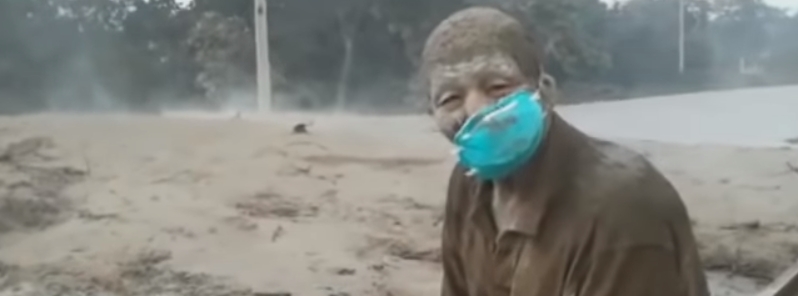Most violent eruption of Fuego volcano in 40 years, massive pyroclastic flows leave hundreds dead

A major eruption started at Guatemala’s Fuego volcano around 16:00 UTC (10:00 local time) on June 3, 2018. The eruption ejected volcanic ash up to 10 km (32 800 feet) above sea level and produced massive lava and pyroclastic flows in its most violent eruption in more than 40 years.
It was Fuego’s second major eruption this year and the most violent since 1974. Lava and pyroclastic flows descended down the mountain and into nearby communities while volcanic ash rained down on communities up to 30 km (18 miles) from the volcano.
“It’s a river of lava that overflowed its banks and affected the small town of El Rodeo. There are injured, burned and dead people,” Sergio Cabanas, the general secretary of Guatemala’s CONRED national disaster management agency, said.
“Unfortunately El Rodeo was buried and we haven’t been able to reach the La Libertad village because of the lava and maybe there are people that died there too,” Cabanas said.
Officials confirmed 33 deaths Monday morning, including one CONRED employee, and nearly 300 injured. About 1.7 million people have been affected by the eruption.
So far, the deaths are concentrated in the towns of El Rodeo, Alotenano and San Miguel los Lotes, officials said, adding that rescue operations were suspended until 11:00 UTC, June 4 due to dangerous conditions and inclement weather.
The eruption closed Guatemala City’s La Aurora international airport due to the presence of volcanic ash, Guatemala’s civil aviation authority said on Twitter.
More than 3 000 people were evacuated.
Officials warned the public and tourists that volcanic eruption still presents a danger and could produce more mud and pyroclastic flows. Residents of four Guatemala’s regions are advised to wear masks as protection against falling ash.
The alerts have increased to Red level in Escuintla, Alotenango, Sacatepéquez, Yepocapa and Chimaltenango, following the eruption, while the institutional level has increased to Orange, enabling 3 shelters in the department of Escuintla.





Update
June 8
The death toll from Fuego’s most violent eruption in four decades has been gradually rising and now stands at 109, Guatemala’s disaster and forensic agency Inacif said earlier on Thursday, June 7.
June 30
At least 190 people were killed, 57 injured, and 256 remained missing.
Local residents estimate that approximately 2 000 people are buried] and a local organization said that up to 2 900 may have died.
Featured image: Survivor speaks after major eruption of Guatemalan Fuego volcano on June 3, 2018. Credit: Telediario

Commenting rules and guidelines
We value the thoughts and opinions of our readers and welcome healthy discussions on our website. In order to maintain a respectful and positive community, we ask that all commenters follow these rules.